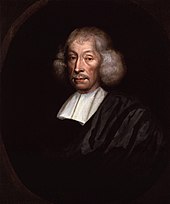
HMS Beagle was a Cherokee-class 10-gun brig-sloop of the Royal Navy, one of more than 100 ships of this class. The vessel, constructed at a cost of £7,803, was launched on 11 May 1820 from the Woolwich Dockyard on the River Thames. Later reports say the ship took part in celebrations of the coronation of King George IV of the United Kingdom, passing through the old London Bridge, and was the first rigged man-of-war afloat upriver of the bridge. There was no immediate need for Beagle so she "lay in ordinary", moored afloat but without masts or rigging. She was then adapted as a survey barque and took part in three survey expeditions.
Natural theology, once also termed physico-theology, is a type of theology that seeks to provide arguments for theological topics based on reason and the discoveries of science.
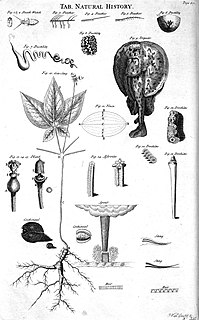
Natural history is a domain of inquiry involving organisms, including animals, fungi, and plants, in their natural environment, leaning more towards observational than experimental methods of study. A person who studies natural history is called a naturalist or natural historian.
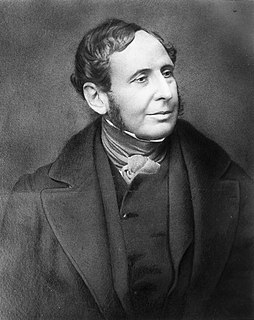
Vice-Admiral Robert FitzRoy was an English officer of the Royal Navy and a scientist. He achieved lasting fame as the captain of HMS Beagle during Charles Darwin's famous voyage, FitzRoy's second expedition to Tierra del Fuego and the Southern Cone.

The Voyage of the Beagle is the title most commonly given to the book written by Charles Darwin and published in 1839 as his Journal and Remarks, bringing him considerable fame and respect. This was the third volume of The Narrative of the Voyages of H.M. Ships Adventure and Beagle, the other volumes of which were written or edited by the commanders of the ships. Journal and Remarks covers Darwin's part in the second survey expedition of the ship HMS Beagle. Due to the popularity of Darwin's account, the publisher reissued it later in 1839 as Darwin's Journal of Researches, and the revised second edition published in 1845 used this title. A republication of the book in 1905 introduced the title The Voyage of the "Beagle", by which it is now best known.

Darwin's finches are a group of about 18 species of passerine birds. They are well known for their remarkable diversity in beak form and function. They are often classified as the subfamily Geospizinae or tribe Geospizini. They belong to the tanager family and are not closely related to the true finches. The closest known relative of the Galápagos finches is the South American Tiaris obscurus. They were first collected when the second voyage of the Beagle visited the Galápagos Islands, with Charles Darwin on board as a gentleman naturalist. Apart from the Cocos finch, which is from Cocos Island, the others are found only on the Galápagos Islands.

Charles Darwin's views on religion have been the subject of much interest and dispute. His pivotal work in the development of modern biology and evolution theory played a prominent part in debates about religion and science at the time. In the early 20th century, his contributions became a focus of the creation–evolution controversy in the United States.

The publication of Darwin's theory brought into the open Charles Darwin's theory of evolution through natural selection, the culmination of more than twenty years of work.
The inception of Darwin's theory occurred during an intensively busy period which began when Charles Darwin returned from the survey voyage of the Beagle, with his reputation as a fossil collector and geologist already established. He was given an allowance from his father to become a gentleman naturalist rather than a clergyman, and his first tasks were to find suitable experts to describe his collections, write out his Journal and Remarks, and present papers on his findings to the Geological Society of London.

Thomas Hornsey Bell FRS FLS was an English zoologist, dental surgeon and writer, born in Poole, Dorset, England.
Nature writing is nonfiction or fiction prose or poetry about the natural environment. Nature writing encompasses a wide variety of works, ranging from those that place primary emphasis on natural history facts to those in which philosophical interpretation predominate. It includes natural history essays, poetry, essays of solitude or escape, as well as travel and adventure writing.

Leonard Jenyns was an English clergyman, author and naturalist. He was forced to take on the name Leonard Blomefield to receive an inheritance. He is chiefly remembered for his detailed phenology observations of the times of year at which events in natural history occurred.
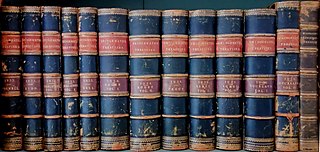
The Bridgewater Treatises (1833–36) are a series of eight works that were written by leading scientific figures appointed by the President of the Royal Society in fulfilment of a bequest of £8000, made by Francis Henry Egerton, 8th Earl of Bridgewater, for a work on "the Power, Wisdom, and Goodness of God, as manifested in the Creation." Despite being voluminous and costly, the series was very widely read and discussed, becoming one of the most important contributions to the Victorian literature on the relationship between religion and science. They made such an impact that Charles Darwin began On the Origin of Species with a quotation from the Bridgewater Treatise of William Whewell.

The second voyage of HMS Beagle, from 27 December 1831 to 2 October 1836, was the second survey expedition of HMS Beagle, under captain Robert FitzRoy who had taken over command of the ship on its first voyage after the previous captain, Pringle Stokes, committed suicide. FitzRoy had thought of the advantages of having someone onboard who could investigate geology, and sought a naturalist to accompany them as a supernumerary. At the age of 22, the graduate Charles Darwin hoped to see the tropics before becoming a parson and accepted the opportunity. He was greatly influenced by reading Charles Lyell's Principles of Geology during the voyage. By the end of the expedition, Darwin had made his name as a geologist and fossil collector and the publication of his journal gave him wide renown as a writer.

Charles Robert Darwin was an English naturalist, geologist, and biologist, widely known for contributing to the understanding of evolutionary biology. His proposition that all species of life have descended from a common ancestor is now generally accepted and considered a fundamental concept in science. In a joint publication with Alfred Russel Wallace, he introduced his scientific theory that this branching pattern of evolution resulted from a process that he called natural selection, in which the struggle for existence has a similar effect to the artificial selection involved in selective breeding. Darwin has been described as one of the most influential figures in human history, and he was honoured by burial in Westminster Abbey.
This is a partial list of the writings of Charles Darwin, including his main works.

Francis Orpen Morris was an Irish clergyman, notable as "parson-naturalist" and as the author of many children's books and books on natural history and heritage buildings. He was a pioneer of the movement to protect birds from the plume trade and was a co-founder of the Plumage League. He died on 10 February 1893 and was buried at Nunburnholme, East Riding of Yorkshire, England.
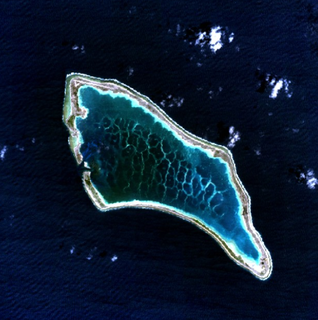
The Structure and Distribution of Coral Reefs, Being the first part of the geology of the voyage of the Beagle, under the command of Capt. Fitzroy, R.N. during the years 1832 to 1836, was published in 1842 as Charles Darwin's first monograph, and set out his theory of the formation of coral reefs and atolls. He conceived of the idea during the voyage of the Beagle while still in South America, before he had seen a coral island, and wrote it out as HMS Beagle crossed the Pacific Ocean, completing his draft by November 1835. At the time there was great scientific interest in the way that coral reefs formed, and Captain Robert FitzRoy's orders from the Admiralty included the investigation of an atoll as an important scientific aim of the voyage. FitzRoy chose to survey the Keeling Islands in the Indian Ocean. The results supported Darwin's theory that the various types of coral reefs and atolls could be explained by uplift and subsidence of vast areas of the Earth's crust under the oceans.

The era of European and American voyages of scientific exploration followed the Age of Discovery and were inspired by a new confidence in science and reason that arose in the Age of Enlightenment. Maritime expeditions in the Age of Discovery were a means of expanding colonial empires, establishing new trade routes and extending diplomatic and trade relations to new territories, but with the Enlightenment scientific curiosity became a new motive for exploration to add to the commercial and political ambitions of the past. See also List of Arctic expeditions and List of Antarctic expeditions.
